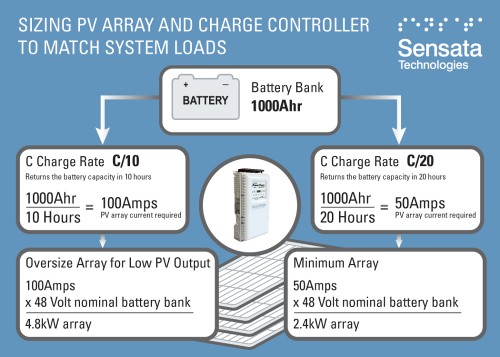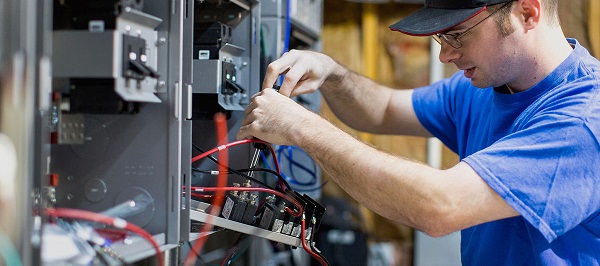Batteries used in DC coupled PV systems are typically rated at STC and at a discharge rate over a time period of 20 hours (C/20).
The C represents the battery capacity and the 20 represents the number of hours of discharge time. The C rate can also describe the charge rate to return the discharged capacity to the battery.
Generally, a C/5 rate (replacing the capacity in 5 hours) is commonly used when the objective is to quickly charge the batteries while utilizing inverter/chargers with generator or grid AC inputs.

PV nameplate performance, however, is never achieved largely due to the impeding factors such as system components, site conditions, sun hours, space and budget. More often than not, PV arrays are undersized to battery capacity and system loads.
Industry veteran and author Ryan Mayfield suggests in his book Photovoltaic Design and Installation for Dummies using the system’s battery capacity to quickly figure out and compare the minimum and efficient array size required to return the amps to a battery bank.
Mayfield explains a realistic and optimal rate of charge (current) harvested from a PV array should land between the C/10 to C/20 values of the total battery bank amp-hour capacity.
















Comments